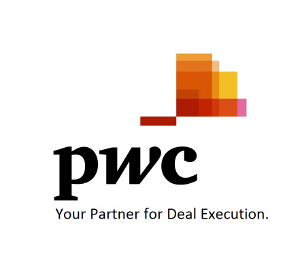Community Development Finance Institutes: Providing Clean Energy Capital
19 january 2013
Oftentimes, larger institutions do not finance small renewable energy and energy efficiency projects due to their lack of scale and higher risk profile. But, this is exactly the niche community development financial institutions (CDFIs) are filling by making it possible for small developers, businesses, and underserved homeowners to finance clean energy projects.
CDFIs are not a new thing. In fact, they have been around since the late 1800s (they were outgrowths of the immigrant wards in New York City and the Prairie Populist movement), though their activity level did not pick up until the 1990s with the passage of two key bills.
The Basics
According to the CDFI Coalition, CDFIs are “mission-driven financial institutions that provide financial products and services to people and communities underserved by traditional financial institutions.”
There are approximately 800 CDFIs and they come in a variety of flavors. The six primary types are banks, credit unions, loan funds, venture capital funds, microenterprise development loan funds, and development corporations. Each type serves a different purpose, has a unique governance and ownership structure, faces a different level of regulation, targets different borrowers, has access to unique types of capital, and offers certain kinds of financial products and services. CDFIs can range in size from local to national organizations.
CDFIs certified by the CDFI Fund in the Department of Treasury are also required to provide appropriate levels of technical assistance to their customers, such as credit counseling, business planning, guidance, and training.
Funding Sources
One of the CDFI industry’s strength is its ability to tap multiple sources of capital. Revised Community Reinvestment Act regulations passed in 1995 require banks to lend in local communities, including those with low and moderate-income levels. Lending to CDFIs is one way for banks to comply with the Community Reinvestment Act.
About CDFI Fund
In 1994, the CDFI Fund was established as a program of the U.S. Treasury with the express purpose of providing funding to individual CDFIs as well as partner businesses.
It consists of four programs:
- The CDFI Fund Program has two components. The financial component issues grants for at least a one-to-one match to private, non-federal equity (larger CDFIs are expected to achieve higher leverage ratios). The technical assistance component supports capacity-building efforts at CDFIs via grants.
- The Native American CDFI Program includes multiple initiatives with the express purpose of creating and expanding CDFIs in native communities to improve access to credit, capital, and financial services.
- The Bank Enterprise Award Program issues financial rewards (i.e., grants) to FDIC-insured banks that invest in CDFIs or provide lending, investment, and financial services in distressed communities.
- The New Markets Tax Credit (NMTC) Program is a somewhat complex tax incentive program that allows qualified investors to access a 39% tax credit for eligible projects in specified communities. See this article, NREL solar PV financing case study, and a presentation on NMTCs for additional information.
Clean Energy Investment Examples
Increasingly, CDFIs and supporting banks are investing in renewables and energy efficiency improvements. Take, for example, the following recent cases involving Bank of America and NeighborWorks Capital.
Bank of America’s (BofA) recently provided $55 million to CDFIs for energy efficiency investments in homes and buildings. BofA held a competitive application process last year, selecting nine recipient CDFIs in November. Of the total amount awarded, $50 million will be provided as low-cost loans, and the remainder will go to staffing, training, reserves, and marketing needs at selected CDFIs.
One recipient of the BofA loan is Enterprise Cascadia, which will use the funds to scale up an on-bill utility energy efficiency program for homeowners. As part of the program, BofA selected EnergyScoreCards, a subsidiary of Bright Power, Inc., to collect data on the energy and financial savings provided by the CDFIs’ programs.
BofA’s investment complies with the Community Reinvestment Act, but it does not make BofA a CDFI (BofA would need to meet the definition provided earlier). BofA also received a $500,000 grant in 2011 under the CDFI Fund’s Bank Enterprise Award Program. With a 1% interest rate, BofA does not anticipate a significant return on these investments but instead hopes to gain insight into the viability of energy efficiency financing at scale.
If this pilot program proves successful, it could support the creation of a secondary debt market whereby the CDFIs could sell their community loans to larger financial institutions, which can act as conduits by bundling loans made by CDFI’s and then selling the bundled loans as securities to large investors. Of course, safe and sound lending practices would be needed to avoid recreating a situation similar to the sub-prime debacle (although the much smaller CDFI market could not have that scale of impact).
Another example of a CDFI active in clean energy finance is NeighborWorks Capital, which serves nonprofits engaged in community revitalization and affordable housing in all 50 states. NeighborWorks Capital specifically provides pre-development or mini-perm loans for purchasing and installing renewable energy systems, such as solar PV, geothermal, and fuel cells. The pre-construction and construction financing can be for amounts between $200,000 and $500,000 with a maximum 7-year term. The interest rate is 6%-fixed with a 1% origination fee that covers “environmental, energy audit, post-installation energy monitoring and lender’s legal expenses.” The borrower must prove a minimum debt service coverage ratio of 1:10.
Access to capital is a challenge for homeowners, small businesses, and nonprofits across the United States, even in good economic times. CDFIs are well positioned to support money-saving energy efficiency investments and job-creating renewable energy projects.
For more information on other community renewable investment opportunities, see Claire Kreycik’s post: New Options Increase Capital for Community-based Renewable Energy.

Recent Comments